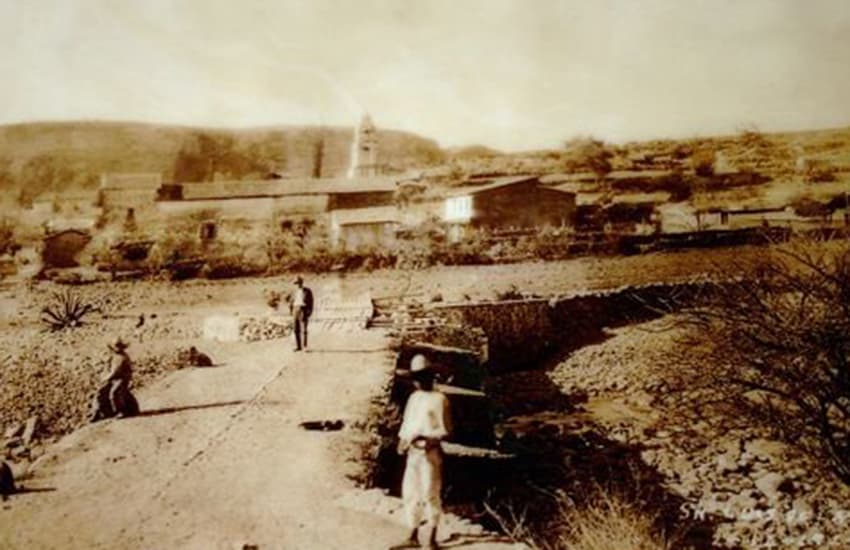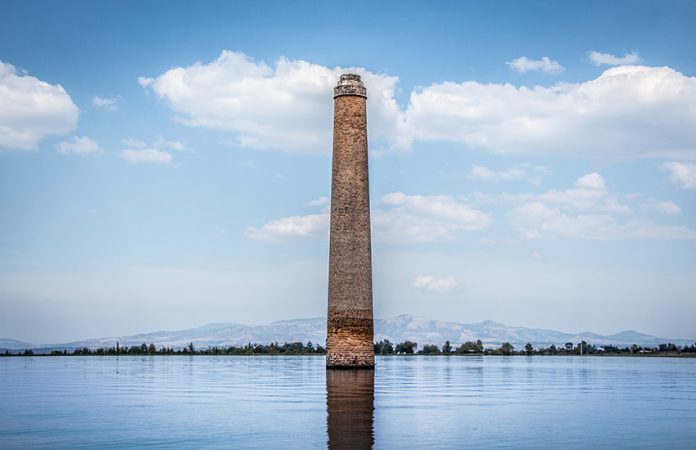It is a spooky sight: a crumbling bell tower poking up from under the waters of a reservoir.
The ruins of underwater towns can be found in various parts of Mexico, sometimes partly visible year-round, sometimes only when water levels drop sufficiently. This year, the water in the reservoir in San Miguel Allende, Guanajuato, dropped enough that it was possible to walk up to the old parish church of Agustín González.
You might think that the destruction of centuries-old buildings would be rare in Mexico, but not so. Frantic dam-building began in the early 20th century, starting with La Boquilla in Chihuahua in 1910.
The pace peaked in the 1970s and 1980s, when 45% of Mexico’s dams were built. The drive behind them was the modernization of Mexico, demanding more agriculture, more electricity and more water for thirsty cities.
No solid, up-to-date data exists on the number, types or conditions of Mexico’s dams. The National Water Commission last put the number at 4,449 in 2008, but a 2019 study estimates there are 5,163.

Fifty of them control 80% of the country’s surface water. The most important are in the Balsas River basin, the northwest of the country, the Grijalva River basin and the Río Bravo (Rio Grande).
Dams and reservoirs have ecological and social costs, many of which are borne by people who do not see the benefits. In Mexico, these people have been disproportionately indigenous.
The main issue around these bodies of water is the forced displacement of entire communities, with the construction of reservoirs drowning homes, farmland and even historical and archaeological sites.
Some examples include El Temascal Dam, built in 1949, displacing 22,000 people in Oaxaca; El Infiernill in 1961 in Michoacán, which displaced 5,500; and La Angostura in 1972, which displaced 15,483 in Chiapas.
Dam building has since continued, although more slowly and with more attention to their creation’s effect on local populations.
The 1996 construction of the Luis Donaldo Colosio Dam in Sinaloa led to the Huites Declaration, a document outlining the grievances of indigenous people displaced by dam building. One of the most recent cases is the El Zapotillo Dam in northeastern Jalisco. It was halted in 2019 because of a lawsuit filed by towns slated to be flooded, although the federal government wants to revive it.
While the towns die underwater, they do not disappear. Where the ruins can be seen, they have become tourist attractions; locals with boats take people out to the sites.
The most notable submerged community is Quechula, home to a 16th-century church and monastery. It’s located in the Malpaso (also known as Nezahualcóyotl) Reservoir in Chiapas, one of the largest and most important reservoirs in Mexico.
Since the dam was built in 1966, the monastery has been seen only twice, once in 2002 and again in 2015. Despite its age and role in early evangelization efforts in the region, it was never declared a historical site.
México state has a number of waterlogged ghost towns. The best-known is San Luis de la Pera in the Taxhimay Reservoir. Since 1943, only the tower of the old parish church has been visible above the waters. The artificial lake is one reason why the area is now an important regional recreational area.
Near the popular weekend getaway of Valle de Bravo is the town of Santo Tomás de los Plátanos, under the Santa Bárbara Reservoir. It and the surrounding 145 hectares were declared a state ecological reserve in 1993.
In Guanajuato, the La Purísima Reservoir covers the ruins of Zangarro, a community flooded in 1979. Its church and other buildings can be seen only in times of severe drought.

The old church remains standing, but it is not in good condition. For years after the church was flooded, there were stories of people diving and finding gold in the submerged ruins.
One of the most important reservoirs in Oaxaca is the Benito Juárez, built in 1961. At the height of the dry season, it is possible to see the old town of Jalapa del Marqués (or Yudxi in Zapotec). It is home to the ruins of an old Dominican monastery as well as a primary school and cemetery. How much is visible each year depends on the level of drought.
Michoacán is home to a structure called the “drowned church (iglesia hundida) of Churumuco.” The town of Churumuco was emptied and flooded with the construction of the El Infiernillo Dam in 1965.
The church was built in 1800 and is noted for being one of the places where Independence War hero José María Morelos y Pavón worked as a priest. Much of the building has collapsed, but what is left is visible for much of the year.
Most of the drowned towns are in the center and south of the country. That is because there are more and larger rivers there, as well as more and larger population centers. But there are also examples of underwater ghost towns in the north.
In Sonora, San Pedro de la Cueva was a town founded by Jesuit missionaries in 1614. It disappeared under the waters of the Plutarco Elías Calles dam in 1962. Today, the reservoir is a popular recreational area for hiking, camping and fishing.
In almost all cases, the flooded communities are small towns, with their parish churches being the main building of note. But other communities such as haciendas have been flooded as well.
San Antonio was one of three haciendas near Pachuca owned by silver magnate Pedro Romero de Terreros. The old hacienda house, chapel and smelting facilities were covered by water with only a smelter smokestack visible year-round.
A similar fate fell upon the El Palote Hacienda in León, Guanajuato. During droughts, it is possible to walk to the ruins of the old chapel and hacienda house.
Leigh Thelmadatter arrived in Mexico 18 years ago and fell in love with the land and the culture in particular its handcrafts and art. She is the author of Mexican Cartonería: Paper, Paste and Fiesta (Schiffer 2019). Her culture column appears regularly on Mexico News Daily.
